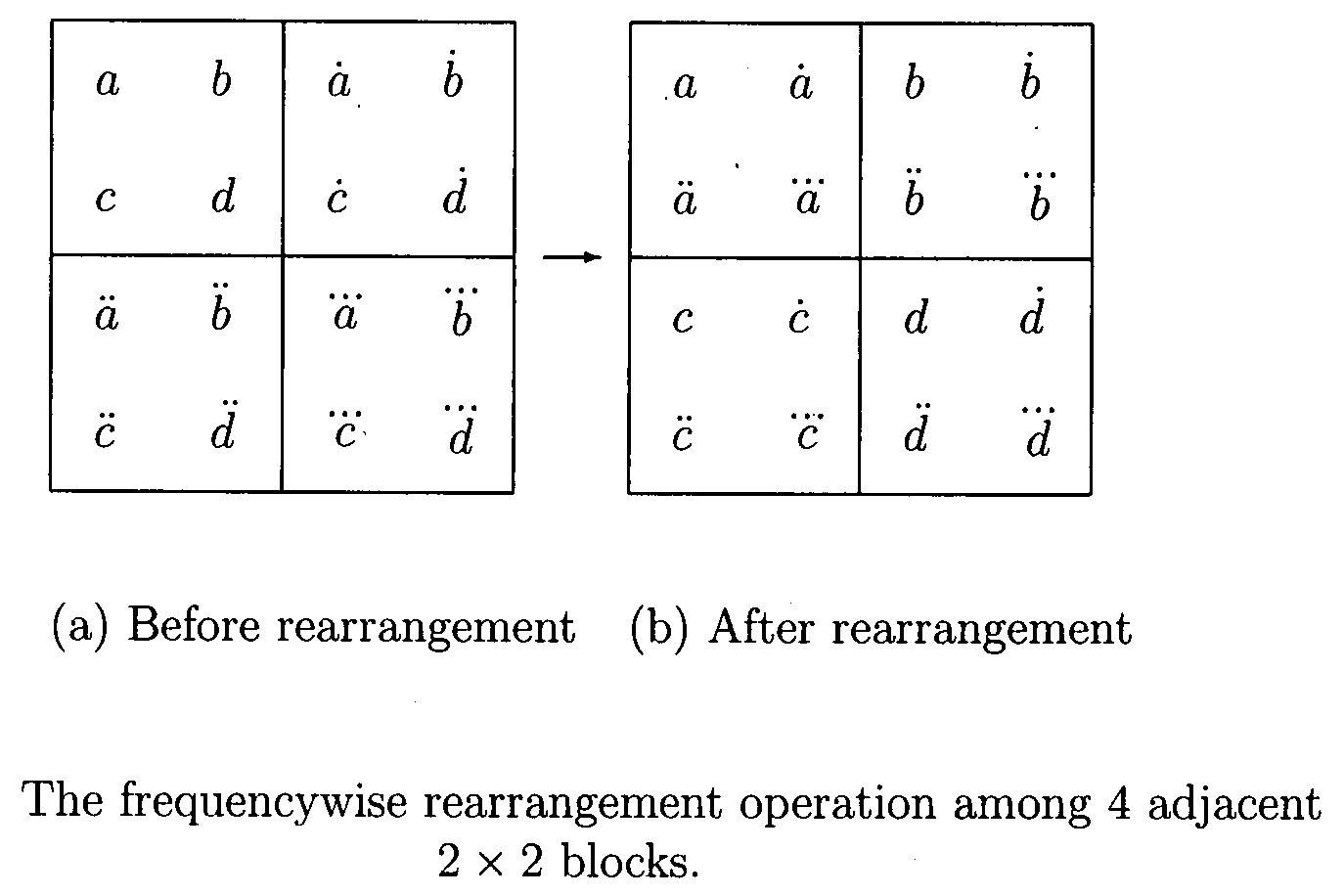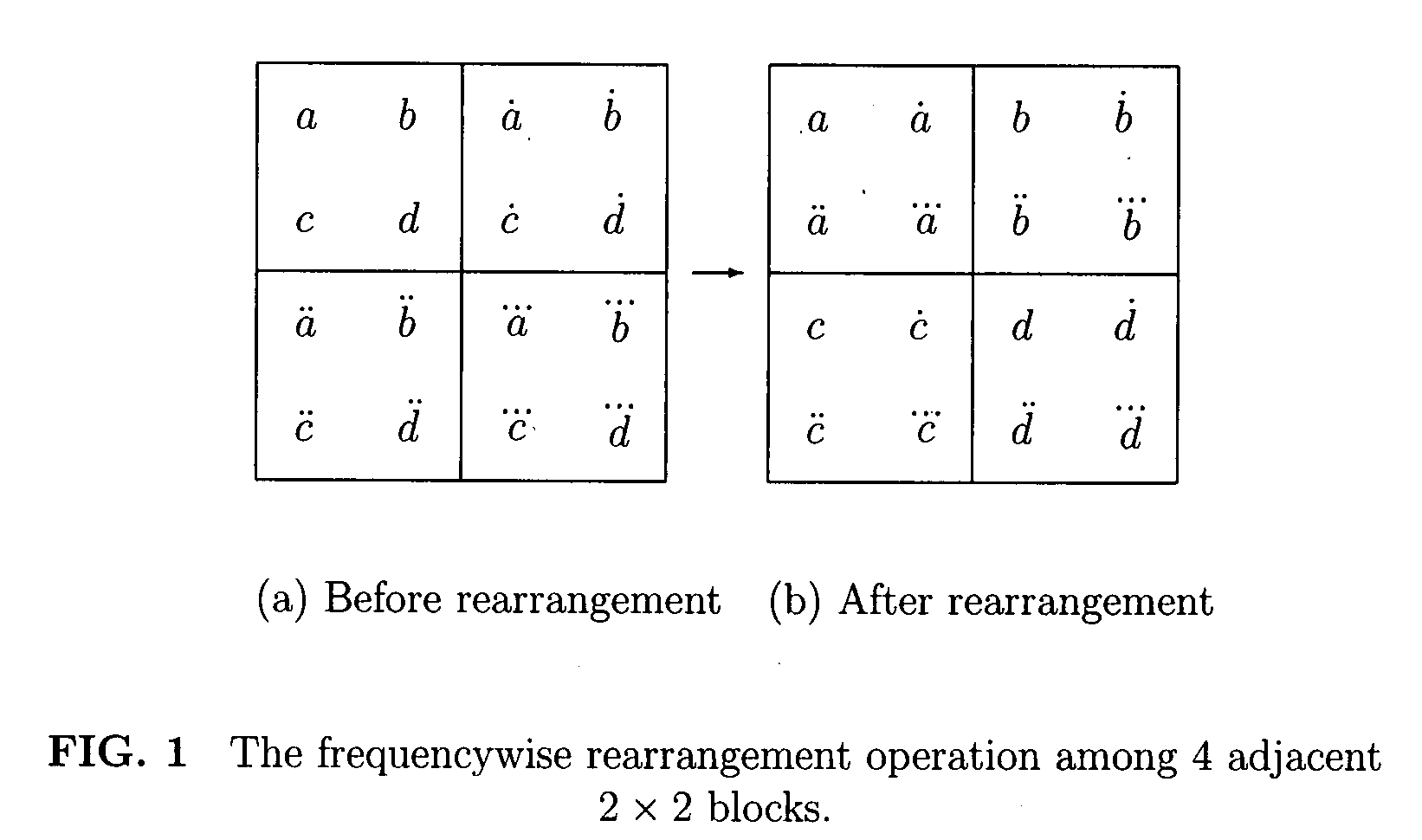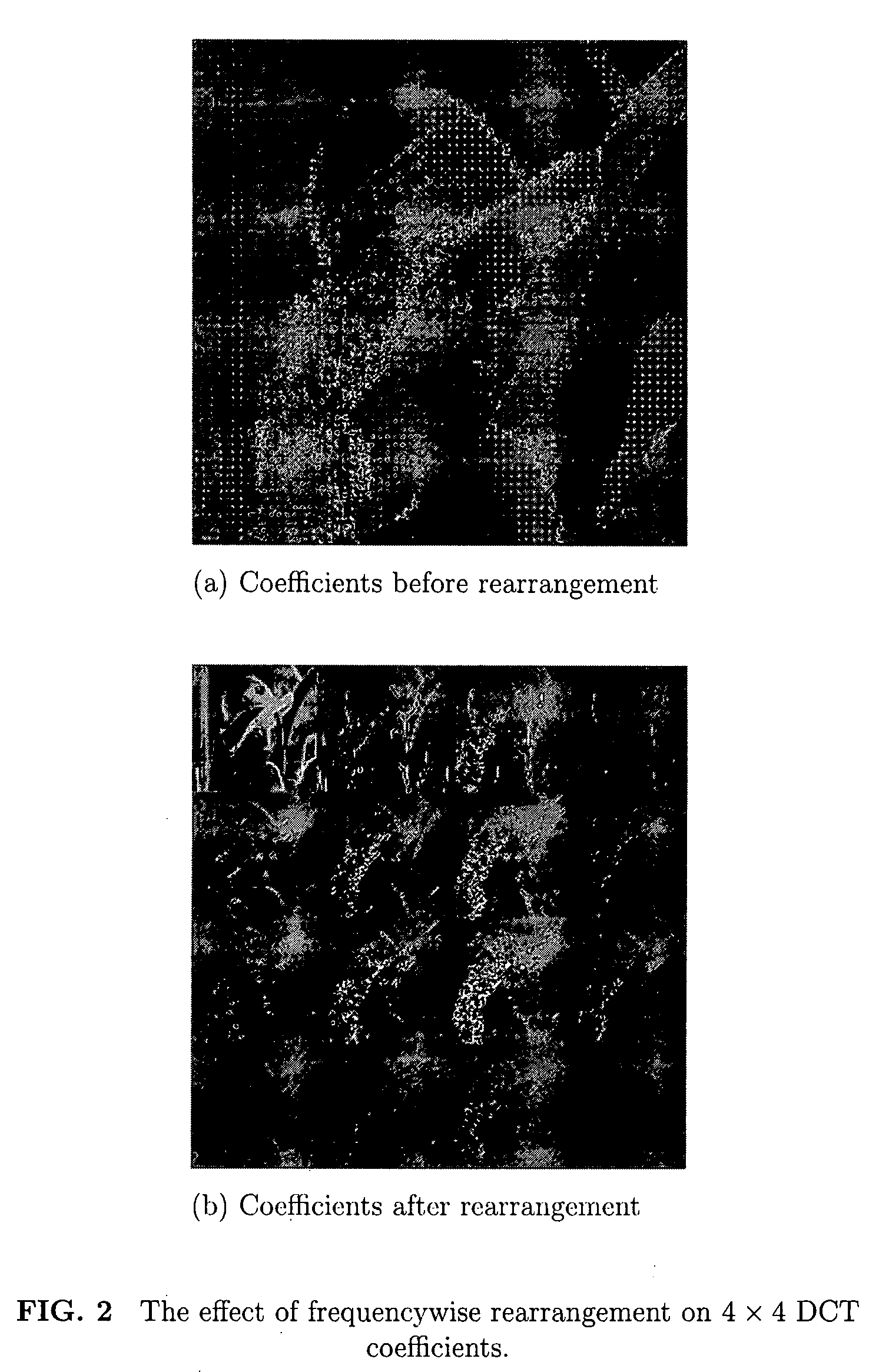Image compression based on union of DCT and wavelet transform
a wavelet transform and image compression technology, applied in the field of digital image data compression, can solve the problems of severely reducing coding efficiency, scan pattern cannot effectively exploit the 2-dimensionally distributed statistical dependency, etc., and achieve the effect of improving image compression performan
- Summary
- Abstract
- Description
- Claims
- Application Information
AI Technical Summary
Benefits of technology
Problems solved by technology
Method used
Image
Examples
Embodiment Construction
[0011]One apparatus and method for effectively exploiting the statistical dependency between local frequency contents of image signals and hence greatly improving compression performance in an image compression system is herein disclosed. In the following description, for the purpose of explanation, specific nomenclature and specific implementation details are set forth to provide a full understanding of the present invention. The details of the techniques are apparent for one skilled in the art to practice the present invention.
[0012]Frequencywise Rearrangement of DCT Coefficients
[0013]The block-based discrete cosine transform (DCT) or its integer approximant is extensively applied in image or video coding systems, including JPEG, MPEG1, MPEG2, MPEG4, H.263 and H.264. It helps to decompose the image data into DCT coefficients which reflects the local frequency contents of the image signal. In those systems, DCT coefficients are scanned and encoded in a linear zigzag patter. However...
PUM
 Login to View More
Login to View More Abstract
Description
Claims
Application Information
 Login to View More
Login to View More - R&D
- Intellectual Property
- Life Sciences
- Materials
- Tech Scout
- Unparalleled Data Quality
- Higher Quality Content
- 60% Fewer Hallucinations
Browse by: Latest US Patents, China's latest patents, Technical Efficacy Thesaurus, Application Domain, Technology Topic, Popular Technical Reports.
© 2025 PatSnap. All rights reserved.Legal|Privacy policy|Modern Slavery Act Transparency Statement|Sitemap|About US| Contact US: help@patsnap.com



